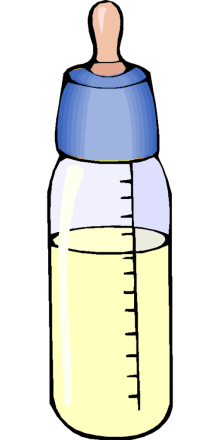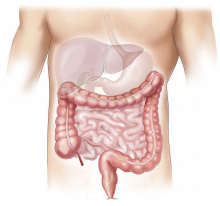Recent Publications

Alisa Cohen, Sondra Turjeman, Rachel Levin, Omry Koren: Comparison of canine colostrum and milk using a multi-omics approach (Anim Microbiome .)
A mother's milk is considered the gold standard of nutrition in neonates and is a source of cytokines, immunoglobulins, growth factors, and other important components, yet little is known about the components of canine milk, specifically colostrum, and the knowledge related to its microbial and metabolic profiles is particularly underwhelming. In this study, we characterized canine colostrum and milk microbiota and metabolome for several breeds of dogs and examined profile shifts as milk matures in the first 8 days post-whelping.

Ibrahim O Sawaid, Abraham O Samson: Evaluation of Stages, Treatment Protocols, and Outcomes of Colorectal Cancer among West Bank Patients (J Clin Med .)
Colorectal cancer (CRC) is the second most widespread cancer among Palestinian patients. As cancer care improves in hospitals across the West Bank, services like palliative care, targeted therapy, bone marrow transplantation, and individualized therapy are still limited. This study aimed to assess the CRC stages, treatment protocols, and survival rates of patients in the West Bank.

Raneen Abu Shqara, Gabriela Goldinfeld, Roni Tenne Cohen, Sari Nahir Biderman, Lior Lowenstein, Maya Frank Wolf: Birth outcomes associated with a natural delivery approach in a perinatal center: A comparative retrospective study (J Obstet Gynaecol Res)
At our center, natural home-like delivery settings have been established in or near conventional labor wards, for the care of pregnant women who prefer little or no medical intervention during labor and birth. We compared obstetrical and neonatal outcomes of women in active spontaneous labor, between those who chose to deliver in a natural-delivery setup and those who chose a conventional setting.

Iris Slutzky-Goldberg: Regenerative Endodontic Procedures in Immature Teeth Affected by Regional Odontodysplasia (J Endod . )
Regional odontodysplasia (ROD) is a rare developmental disorder characterized by hypo-mineralization and hypoplasia of enamel and dentin. Symptoms include poorly developed tooth buds, delayed eruption of permanent teeth in affected quadrants, and ghost teeth. The affected teeth often become necrotic, due to abnormal enamel and dentin development, making them susceptible to caries and infection. The aim of this case report is to describe the treatment of ROD through pulp revascularization.

Adnan Zaina: Clinical outcomes of clostridioides difficile infection in the very elderly (Intern Emerg Med . )
Clostridioides difficile infection (CDI) causes considerable morbidity, mortality, and economic cost. Advanced age, prolonged stay in healthcare facility, and exposure to antibiotics are leading risk factors for CDI. Data on CDI clinical outcomes in the very elderly patients are limited.

Yara Nakhleh-Francis, Yaseen Awad-Igbaria, Reem Sakas, Sarina Bang, Saher Abu-Ata, Eilam Palzur, Lior Lowenstein, Jacob Bornstein: Exploring Localized Provoked Vulvodynia: Insights from Animal Model Research (Int J Mol Sci .)
Provoked vulvodynia represents a challenging chronic pain condition, characterized by its multifactorial origins. The inherent complexities of human-based studies have necessitated the use of animal models to enrich our understanding of vulvodynia's pathophysiology. This review aims to provide an exhaustive examination of the various animal models employed in this research domain

Placental and serum levels of human α-Klotho in preeclampsia & intra-uterine growth retardation: A potential sensitive biomarker? (Pregnancy Hypertens .)
α-Klotho protein has three isoforms: a transmembrane (mKL), a shed- soluble isoform, and a circulating soluble isoform (sKL). mKL is expressed in the kidney and placenta, while sKL is detectable in blood and urine. It is known that α-Klotho levels fluctuate during pregnancy mainly in women with complications such as preeclampsia (PE) and intra-uterine growth restriction (IUGR).
(Shehada Sabren, Tadmor Hagar, Nardeen Khateeb, Farber Evgeny, Francis-Nakhle Yara, Youri Perlitz, Nakhoul Farid)

Chaim Putterman: Constitutive knockout of interleukin-6 ameliorates memory deficits and entorhinal astrocytosis in the MRL/lpr mouse model of neuropsychiatric lupus (J Neuroinflammation . )
Neuropsychiatric lupus (NPSLE) describes the cognitive, memory, and affective emotional burdens faced by many lupus patients. While NPSLE's pathogenesis has not been fully elucidated, clinical imaging studies and cerebrospinal fluid (CSF) findings, namely elevated interleukin-6 (IL-6) levels, point to ongoing neuroinflammation in affected patients. Not only linked to systemic autoimmunity, IL-6 can also activate neurotoxic glial cells the brain. A prior pre-clinical study demonstrated that IL-6 can acutely induce a loss of sucrose preference; the present study sought to assess the necessity of chronic IL-6 exposure in the NPSLE-like disease of MRL/lpr lupus mice.

Ram Harari, Ipsita Chatterjee, Dmitriy Getselter, Evan Elliott: Psilocybin induces acute anxiety and changes in amygdalar phosphopeptides independently from the 5-HT2A receptor (iScience .)
Psilocybin, and its metabolite psilocin, induces psychedelic effects through activation of the 5-HT2A receptor. Psilocybin has been proposed as a treatment for depression and anxiety but sometimes induces anxiety in humans. An understanding of mechanisms underlying the anxiety response will help to better develop therapeutic prospects of psychedelics. In the current study, psilocybin induced an acute increase in anxiety in behavioral paradigms in mice.

Nasser Sakran: Early safety outcomes of laparoscopic one anastomosis gastric bypass in patients with class III, IV, and V obesity (World J Surg .)
The extremely obese patient deserves special consideration: significant comorbidities, technical difficulties, and increased postoperative morbidity and mortality are all expected in this patient population. The study compared early postoperative complications (≤30-day) following one-anastomosis gastric bypass (OAGB) morbidity in patients with morbid obesity class IV obesity, body mass index (BMI) ≥50-59.9 kg/m2, and class V obesity, BMI ≥60 patients.

David Karasik: Deciphering the complex relationship between type 2 diabetes and fracture risk with both genetic and observational evidence (Elife . )
The 'diabetic bone paradox' suggested that type 2 diabetes (T2D) patients would have higher areal bone mineral density (BMD) but higher fracture risk than individuals without T2D. In this study, we found that the genetically predicted T2D was associated with higher BMD and lower risk of fracture in both weighted genetic risk score (wGRS) and two-sample Mendelian randomization (MR) analyses

Mary C J Rudolf: Tackling obesity while preventing obesity stigma (Arch Dis Child .)
Obesity is a significant public health problem. Prevalence is rising in children and young people, with lifelong health impacts and implications for paediatric clinical practice. Obesity stigma is increasingly acknowledged as a problem within health services. Health professionals can inadvertently contribute to this stigma, which is harmful and in itself can promote weight gain. A complex web of factors contributes to obesity, and a simplistic approach exclusively focused on personal responsibility, diet and exercise is unhelpful. A more nuanced, sensitive and informed approach is needed, with careful use of language and non-judgemental partnership working.

Inshirah Sgayer, Tala Barbara, Asal Darwish, Ala Aiob, Lior Lowenstein, Maya Frank Wolf, Marwan Odeh: The Accuracy of Sonographic Fetal Weight in Very Preterm Infants (≤32 weeks) (J Gynecol Obstet Hum Reprod . )
Examines the accuracy of sonographic fetal weight to predict birthweight in very preterm infants (<32 weeks), and to compare the accuracy of estimated fetal weight (EFW) between those small for gestational age (SGA) and those appropriate for gestational age (AGA).

Shemy Carasso: Artificial Intelligence-Based Left Ventricular Ejection Fraction by Medical Students for Mortality and Readmission Prediction (Diagnostics (Basel) . )
Point-of-care ultrasound has become a universal practice, employed by physicians across various disciplines, contributing to diagnostic processes and decision-making. Aim: To assess the association of reduced (<50%) left-ventricular ejection fraction (LVEF) based on prospective point-of-care ultrasound operated by medical students using an artificial intelligence (AI) tool and 1-year primary composite outcome, including mortality and readmission for cardiovascular-related causes.

Inshirah Sgayer, Karina Nskovica, Iuliia Murkhovskyi, Raneen Abu Shqara , Artyom Bilyk, Lior Lowenstein, Maya Frank Wolf: The Impact on Birth Outcomes of Sonographic Fetal Weight Estimation in Neonatal Macrosomia (Am J Perinatol .)
Our objective was to examine the association between sonographic estimated fetal weight (EFW) and obstetrical and neonatal outcomes in women with neonatal macrosomia.



